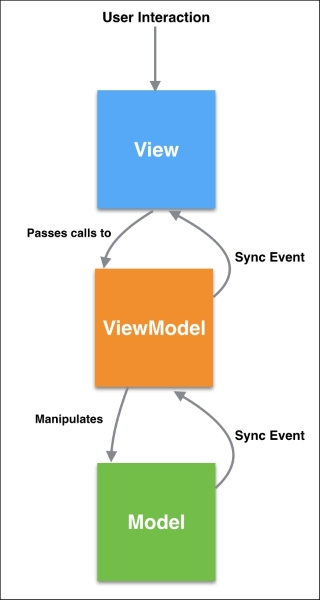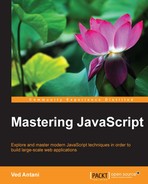MVVM was originally coined by Microsoft for use with Windows Presentation Foundation (WPF) and Silverlight. MVVM is a variation of MVC and MVP and further tries to separate the user interface (view) from the business model and application behavior. MVVM creates a new model layer in addition to the domain model that we discussed in MVC and MVP. This model layer adds properties as an interface for the view. Let's say that we have a checkbox on the UI. The state of the checkbox is captured in an IsChecked property. In MVP, the view will have this property and the presenter will set it. However, in MVVM, the presenter will have the IsChecked property and the view is responsible for syncing with it. Now that the presenter is not really doing the job of a classical presenter, it's renamed as ViewModel:

Implementation details of these approaches are dependent on the problem that we are trying to solve and the framework that we use.
